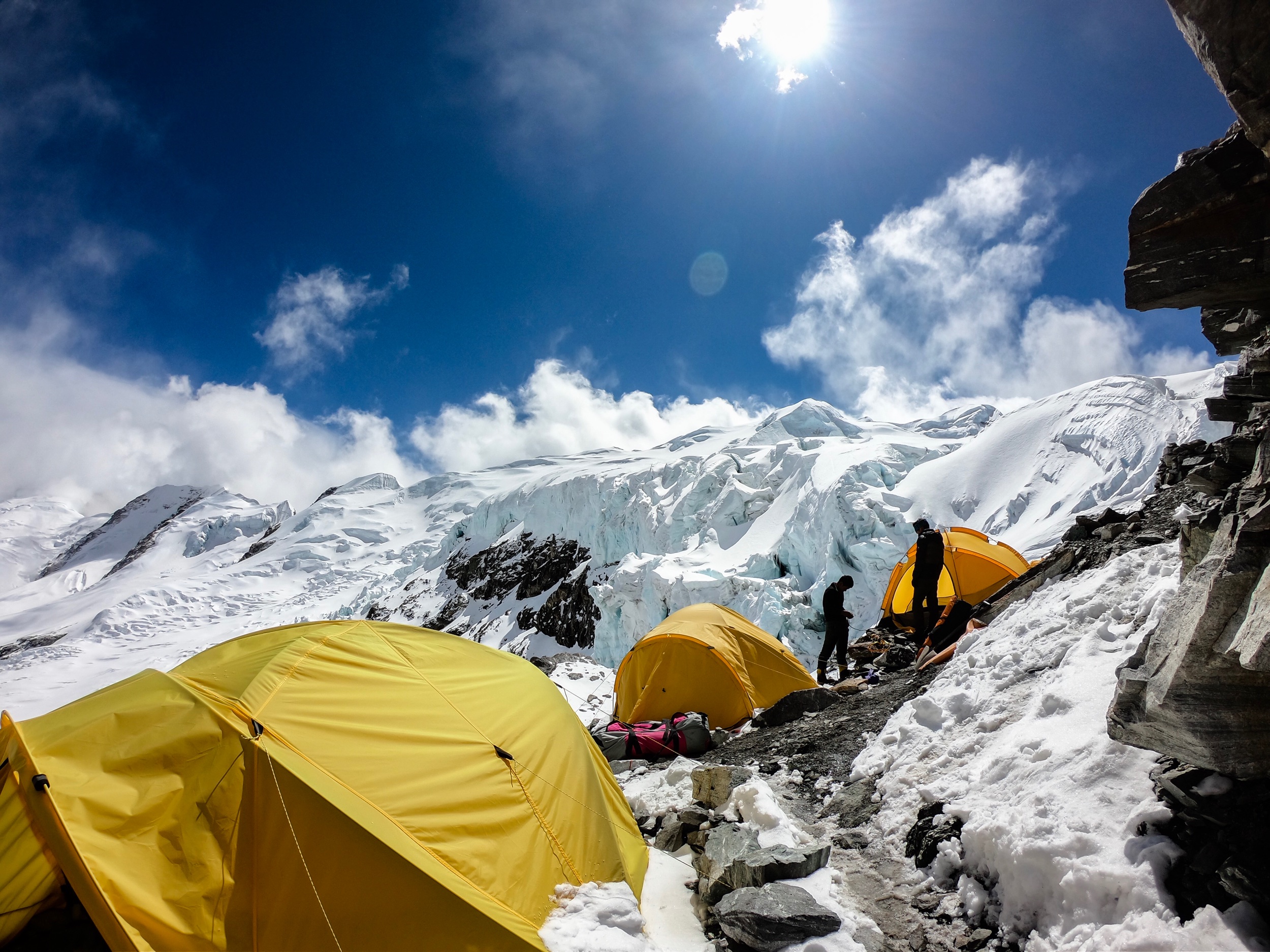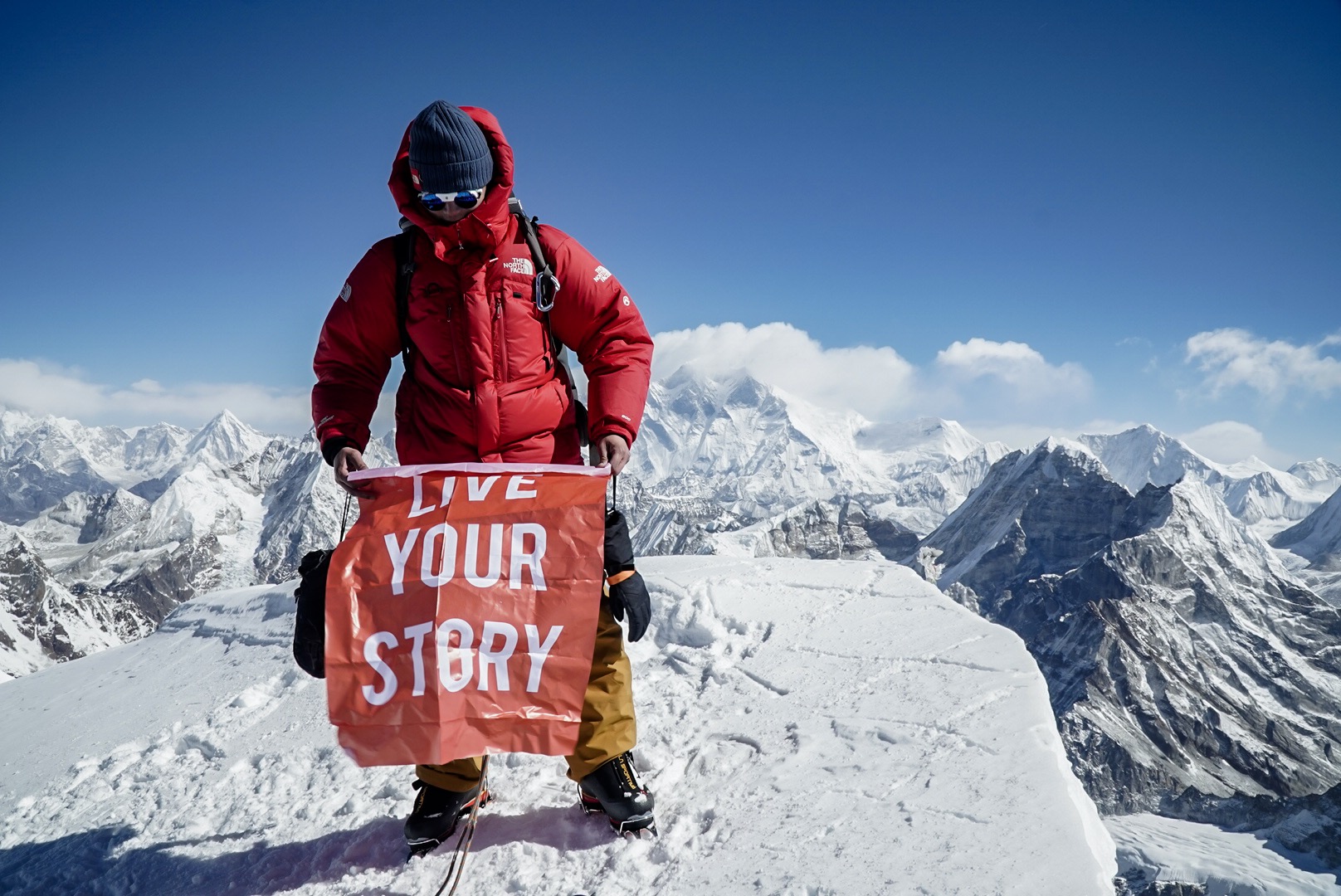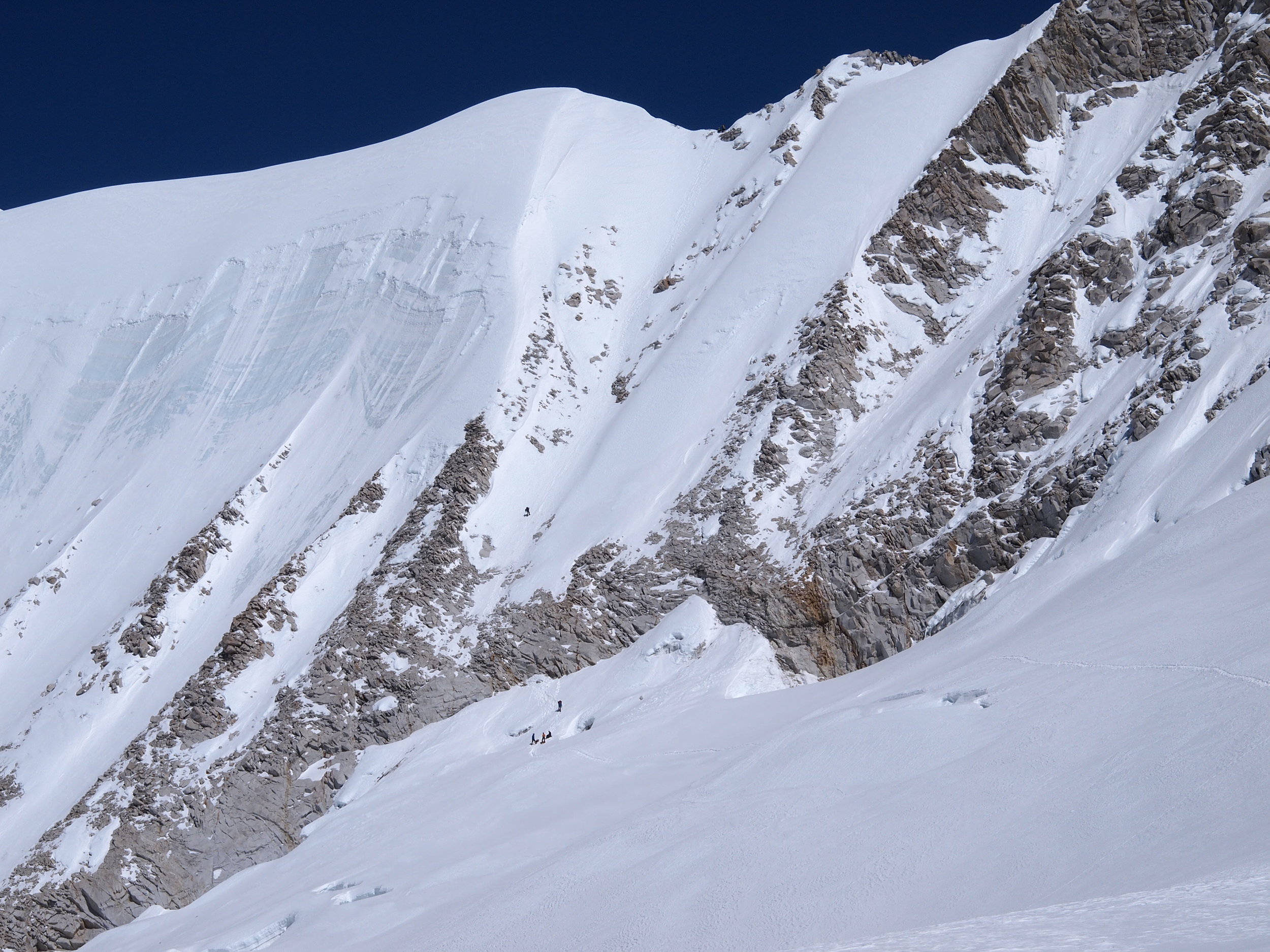Baruntse Peak 7129M Expedition strategy - Namas Adventure
Baruntse Peak 7129M Expedition strategy
Baruntse Peak standing at 7129 M mountain is situated in Nepal between Mount Everest and Makalu in the Barun-Makalu National Park. Mount Baruntse is a substantial and symmetrical snow peak, has four ridges and four summits. It is bounded on the east by the Barun Glacier flowing north-south from Cho, to the north-west by the Imja glacier and the Hunku glacier forms the south-east boundary. The three main ridges of Baruntse are situated between these glaciers and form an upturned ‘Y’running from Cho Polu (6695m) in the north past the Humni La, on to the north summit where it divides. Other well -known mountains in this area are Makalu, Lhotse, Chamlang, Everest, and the trekking-peak Mera Peak.
Bruntse was first climbed on 30 May 1954 by Colin Todd, Geoff Harrow of the Hilary New Zealand Expedition. They have climbed the mountain by the southeast Ridge. Since then many climbers have used this route and succeeded. This mountain has also been becoming coveted day by day like the other Pumori, Ama Dablam as well as Everest too.
Expedition Route
The south-east Ridge of Baruntse is a straightforward climb, mainly on snow but at high altitudes and crossing some steep sections of ice at 50°, with a prominent ice cliff at about 7,000 meters to be climbed on the way to the top. Sections of the upper summit ridge can be corniced, but there is little evidence of avalanche risk on the lower slopes of the mountain. The most successful ascents have been made in the spring when snow conditions have been good and the mountain has been found to be objectively safe at this time. There is still a debate on which season it is best to climb Baruntse as in the past few years 2013 - 2018 more summits have been done during the Autumn season. The steeper sections of the climb are safeguarded by fixed rope, as are the obvious cornices that need to be traversed between the camps on the mountain.
Expedition Strategy
Acclimatizing at Mera Peak 6476 M
Baruntse Base Camp (5640 M)
Baruntse expedition route
After summiting Mera Peak, the team heads towards Baruntse Base Camp 5460M. 500m descent down into the Honku valley climbers is assured with rich oxygen, warm weather, and sunny spell making good conditions for a good night's sleep. The natural environment around is utterly desolate and utterly magnificent in its desolation.
Baruntse base camp is at 5460M, a few kilometers further up the glacier at the entrance to the valley which gives access to East Col. From a camp set up immediately below the pass, it is easy to cross East Col to West col and reaching Camp 1 (6,146 M) at a large snowy plateau, on the Lower Barun Glacier. This places the expedition team immediately below the South-East Ridge of the mountain and provides a suitable spot for Camp 2 or Advanced Camp 2 (AC2). This plateau could be reached directly up the Lower Barun Glacier but this approach is not recommended as an icefall at the toe of the glacier has made the route impassable in previous years. So a different strategy where one more camp higher on the mountain, at about 6,500 M is placed, from where the summit is attempted.
The team will practice ascending fixed ropes and rappelling on steep, icy terrain. Hike glacier just outside of camp and spend a few sessions perfecting skills on overhanging ice. Meanwhile, the Sherpa team will be fixing ropes high in the mountain for the team. Additionally acclimatization hike to the base of the fixed lines below camp 1. The hike features dirt trails, scramble over rocks, and crossing the beautiful glaciers. The day is spent training and preparing for the expedition just below Baruntse peak and then head back to Baruntse base camp.
Puja Day Ceremony ( Rituals ) Base Camp - West Col - Camp 1 (6100 M) Approx 10 hours
Photos by - David
A Puja ceremony, rituals are performed praying and asking permission to the god mountain for safe passage, success, and safety of the team in the morning, which is customary before beginning a climb. Many of the western climbers participating takes part by placing an object to be used in the climb - an ice axe, crampons, boots - on an altar that was made from stones and adorned with Tibetan buddhist prayer flags. The ceremony is concluded with readings and ritual blessings.
Guiding Sherpa leader teams fix the rope on all the main difficulties of the summit ridge. Sherpas set up the safest way through the crevasses, overhangs, and icefalls.
Sirdar Sherpas team carry loads from basecamp at 5400 meters to camp 1 at 6100 meters and then returned to basecamp. The climb mostly consists of a moderate climb with steeper sections at the West col which is the final ascent before reaching Camp 1. Only the last part is more difficult, where the west col consist, 45 degrees 200-meter high ice wall. Beautiful views on the surrounding mountains: Ama Dablam, Baruntse, Makalu, and the Amphu Lambtsa La which all the climbers will have to cross in a few day’s time when returning to Lukla.
Clients are meant to carry their personal loads 8kgs - 12kgs throughout the climb.
Camp 1 - Camp 2 (6,400M) or Advanced camp 2.1 (6,500M) | Time approx: 3 - 4 hours
Photo by - Matthew D Thornton
Camp 2 (6,400M) or advanced Camp 2.1 around 6,500m, in a small col between Baruntse 2 and Baruntse itself. Baruntse 2 is also called Baruntse south-east. The camp lies between the two summits in a saddle-like slope.
Camp 2 - Summit Push - Back to Camp 2 or 1 | Time approx: 10 - 12 hours
Technical Challenges at 6900M ridge
Pic by - Karvaniers
Very sharp ridge at (approx 6900m). The sharp ridge provides excellent ice climbing over several steep ice walls and extremely exposed cornices. Sherpa team fixing the rope will assess the crevasse opening ridge and there is a consideration of adding a ladder at the top if needed. But normally combining the skills of ice climbing on overhanging ice and through the assistance of fixed rope walking on the narrow steep wall ice wall climbers can overcome the final section of the ridge, then a further 60 - 90 min climb to reach the summit. The summit hosts some of the best views of Everest, Lhotse, Makalu, and Cho Oyu that can be seen anywhere in the Himalayas.
Making it to the summit is 60% job done. Descending is one of the grueling parts of climbing parts of mountain climbing. From there the descendant with all the abseiling skills will demand the climber’s full attention. So, climbers can celebrate their moment at the top. If weather permits and stays are non windy then climbers might be able to enjoy 30 - 60 min of a celebratory moment with the panoramic view Himalayas. But normally our Guiding team will advise the climbers when to descend down. It’s best to celebrate and at the same time refuel and gain some of your energy back to be able to descend back to camp 2 or 1 safely. A lot of the mountain incident happens on the way back while descending.
Amphu Lapcha Pass 5800M
After summiting Baruntse mountain, the journey back still hosts more surprises, and before climbers reach to next civilization at Pangboche. Morene country, over boulders, passed lakes to the foot of the beautiful Amphu Lapcha. Amphu Lapcha hosts zigzag glaciers with base camp at North and south where we have to stop for a camp night. From Amphu Labtsa pass grants us views of Imja Valley, Everest, Lhotse, Nuptse, Island peak, Ama Dablam, Baruntse, just awesome.
Advice to climbers keen on climbing Baruntse Peak
Enthusiast climbers will definitely have to prepare themselves for technical climbing. On the last 250- 300 meters of altitude, the climbing gets rather technical. Route fixing guides/Sherpas have to take a large number of ropes to fix the way. Baruntse is not for novices climbers. Climbers need to have some experience at least. Climbing experiences on both the alps, Andes mountains, and the Himalayas is necessary. Climbers with some experience in mountain climbing it is another great experience to climb Baruntse to further bag and gain a lot of knowledge in mountaineering.
If you do have any more questions, please ask us below in the comment section or you can email us at bookings@namasadventure.com and our team will get back to you as soon as they can.
Stay well. Challenge yourself. Dare great things and live your story.
Further Source:
















